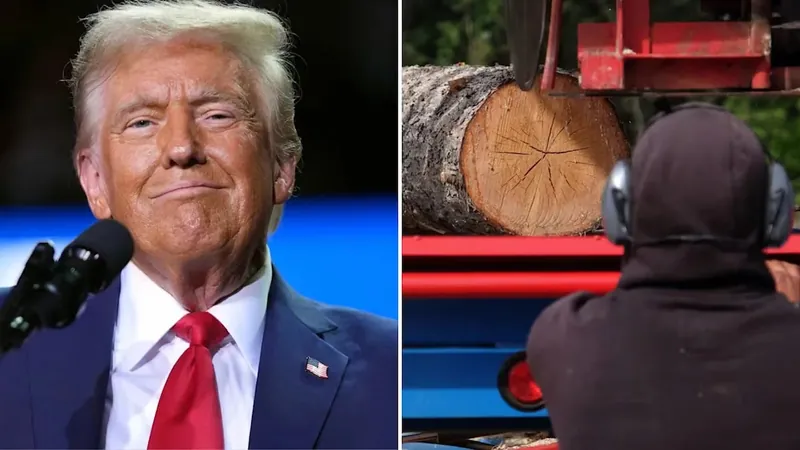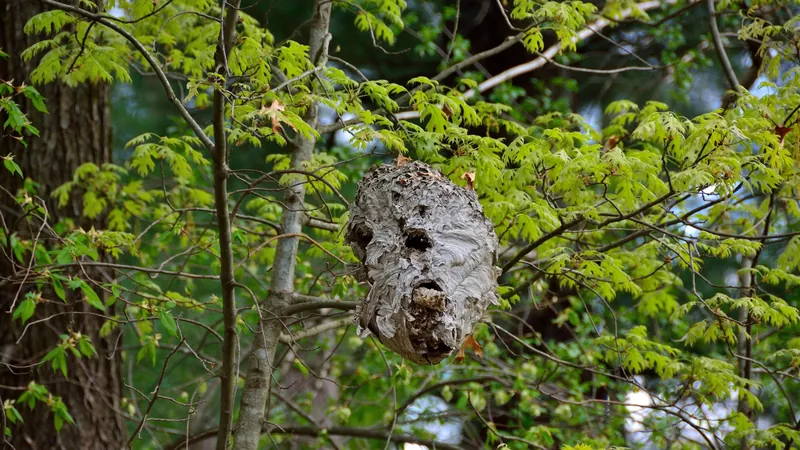
Trump's Tariff Threat: Is B.C.'s Lumber Industry in Danger?
2025-08-25
Author: Jacques
A Looming Crisis for B.C.'s Forestry Sector
British Columbia's lumber industry is on edge as a crucial U.S. Department of Commerce investigation into wood product imports could spell disaster with the potential for new tariffs.
This investigation was prompted by none other than U.S. President Donald Trump himself, who launched a Section 232 inquiry to determine if importing timber and related products jeopardizes national security.
Tariffs: A Double-Edged Sword
For B.C.'s softwood lumber industry, the stakes are high. Already facing a staggering 35% tariff from the U.S., additional tariffs could lead to more mill closures and significant job losses. Experts warn that this is not just a lumber problem; various wood products like plywood and engineered wood could also face heightened tariffs.
"This is not just about lumber," states Russ Taylor, a renowned forestry consultant. "The U.S. is using tariffs as a strategy, and it's aimed squarely at Canada."
Understanding the Section 232 Investigation
Under the Trade Expansion Act of 1962, the Secretary of Commerce is tasked with investigating claims of national security threats posed by imports. Following the investigation, a report must be presented to the president within approximately nine months.
This isn't Trump's first rodeo when it comes to tariffs; previous actions regarding steel and aluminum have wreaked havoc on the Canadian economy, leading to job losses and export declines.
B.C.'s Market Significance
The United States remains the primary market for B.C.’s lumber, consuming over two-thirds of this $10-billion industry. However, with numerous mills shuttering across the province, the future looks bleak as major forestry companies shift their operations south.
Taylor notes the irony: "Even if U.S. mills can't currently handle the absence of Canadian imports, they will seize the opportunity to raise prices. It's just too lucrative for them,” he remarked.
Homebuilders Will Feel the Pinch
Ultimately, it's the average American homebuilder who may pay the price. As tariffs hike costs for Canadian lumber imports, the financial burden will trickle down to those just trying to build or rebuild their homes.
Fall 2023: A Deadline Approaches
The investigation into wood products, which commenced in March, is set to yield results this fall. Forests Minister Ravi Parmar confirmed that the president is likely gathering further data before making a final decision.
"Given Trump's history, we can't predict his next move, but the lumber sector must be prepared for anything—especially with tariffs looming over our heads," Parmar said.
Hope Amid Uncertainty
While the potential for quotas exists, Taylor expresses skepticism over their likelihood, doubting that additional restrictions are necessary given the current high tariffs already benefitting the U.S.
Despite the uncertainty, Parmar remains hopeful, especially about recent federal support announced for B.C.'s lumber sector. He asserts, "As a president who pledges to champion the middle class, it's crucial for Trump to consider the impact his tariffs have on ordinary Americans trying to secure homes."









 Brasil (PT)
Brasil (PT)
 Canada (EN)
Canada (EN)
 Chile (ES)
Chile (ES)
 Česko (CS)
Česko (CS)
 대한민국 (KO)
대한민국 (KO)
 España (ES)
España (ES)
 France (FR)
France (FR)
 Hong Kong (EN)
Hong Kong (EN)
 Italia (IT)
Italia (IT)
 日本 (JA)
日本 (JA)
 Magyarország (HU)
Magyarország (HU)
 Norge (NO)
Norge (NO)
 Polska (PL)
Polska (PL)
 Schweiz (DE)
Schweiz (DE)
 Singapore (EN)
Singapore (EN)
 Sverige (SV)
Sverige (SV)
 Suomi (FI)
Suomi (FI)
 Türkiye (TR)
Türkiye (TR)
 الإمارات العربية المتحدة (AR)
الإمارات العربية المتحدة (AR)